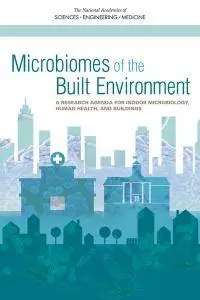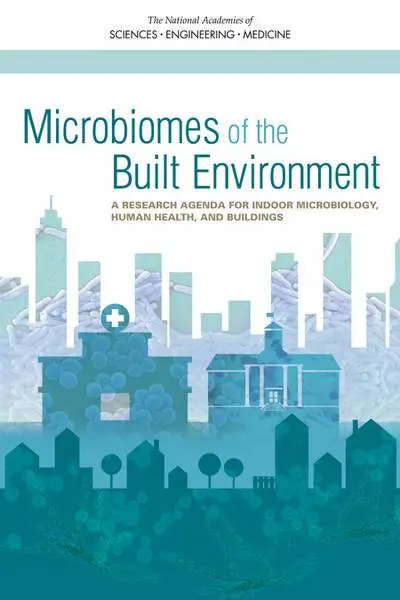"Microbiomes of the Built Environment: A Research Agenda for Indoor Microbiology, Human Health, and Buildings"
National Academy of Engineering; National Academies of Sciences, Engineering, and Medicine; Division on Earth and Life Studies; Health and Medicine Division; Division on Engineering and Physical Sciences; Board on Life Sciences; Board on Environmental Studies and Toxicology
NAS Press | 2017 | ISBN: 0309449804 9780309449809 | 254 pages | PDF | 11 MB
National Academy of Engineering; National Academies of Sciences, Engineering, and Medicine; Division on Earth and Life Studies; Health and Medicine Division; Division on Engineering and Physical Sciences; Board on Life Sciences; Board on Environmental Studies and Toxicology
NAS Press | 2017 | ISBN: 0309449804 9780309449809 | 254 pages | PDF | 11 MB
This volume reviews what is known about the intersection of these disciplines, and how new tools may facilitate advances in understanding the ecosystem of built environments, indoor microbiomes, and effects on human health and well-being. It offers a research agenda to generate the information needed so that stakeholders with an interest in understanding the impacts of built environments will be able to make more informed decisions.
People’s desire to understand the environments in which they live is a natural one. People spend most of their time in spaces and structures designed, built, and managed by humans, and it is estimated that people in developed countries now spend 90 percent of their lives indoors. As people move from homes to workplaces, traveling in cars and on transit systems, microorganisms are continually with and around them. The human-associated microbes that are shed, along with the human behaviors that affect their transport and removal, make significant contributions to the diversity of the indoor microbiome.
The characteristics of “healthy” indoor environments cannot yet be defined, nor do microbial, clinical, and building researchers yet understand how to modify features of indoor environments—such as building ventilation systems and the chemistry of building materials—in ways that would have predictable impacts on microbial communities to promote health and prevent disease. The factors that affect the environments within buildings, the ways in which building characteristics influence the composition and function of indoor microbial communities, and the ways in which these microbial communities relate to human health and well-being are extraordinarily complex and can be explored only as a dynamic, interconnected ecosystem by engaging the fields of microbial biology and ecology, chemistry, building science, and human physiology.
Contents
Preface
Summary
1 Introduction
2 Microorganisms in Built Environments: Impacts on Human Health
3 The Built Environment and Microbial Communities
4 Tools for Characterizing MicrobiomeBuilt Environment Interactions
5 Interventions in the Built Environment
6 Moving Forward: A Vision for the Future and Research Agenda
Appendix A: An Assessment of Molecular Characterization Tools
Appendix B: Study Methods
Appendix C: Committee Member Biographies
Appendix D: Glossary
true PDF with TOC BookMarkLinks



